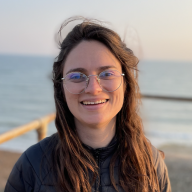
Luisa_Rodriguez
Bio
Luisa Rodriguez is research analyst at 80,000 Hours. Previously, she researched civilisational collapse at the Forethought Foundation for Global Priorities Research, and nuclear war at Rethink Priorities and as a visiting researcher at the Future of Humanity Institute. Before that, she conducted cost-effectiveness evaluations of nonprofit and government programs at ImpactMatters, Innovations for Poverty Action, and GiveWell (as a summer intern).
Posts 18
Comments28
Thanks so much for sharing this. It’s really heartbreaking to hear that someone’s encounter with the community was so painful and costly. I can relate to EA making my life worse in some ways, though I’m fortunate to have found a way to keep EA in my life in a way that’s healthier now. I’m trying to do more to support people who struggle with similar experiences, in part by doing things like the interview in this post.
80k does have some articles on the site that we think could be helpful to people in a similar position to the person who wrote that response. We address issues like how you can have an impact in any job, why personal fit for your career is so important, and why we think it’s helpful to not treat impartial impact as the only goal in life (a bunch of related ideas here, here, and here). But I’d love to find ways to do more to make sure the people who need to hear those messages are actually exposed to them — it’s clearly the case that some people’s experiences in the EA community, and the pressure they feel to have an impact, can be really dispiriting (again, this has definitely been the case for me). I’ll continue to look for opportunities to talk about these things on the podcast, but if people have other ideas for how to support people with these kinds of experiences, I’d love to hear them (and I know my colleagues would as well).
Yea, good question. It's basically because I started with NHS psychiatrists (who strongly prefer to prescribe SSRIs), and only later moved to a private psychiatrist (who recommended I start first with agomelatine because of the excellent side effect profile, given that side effects were my main complaint).
I tracked my mood and thought patterns in a few different ways:
- I use Daylio to track my overall mood once a day and I have 2 years worth of data there.
- I use the GAD9 and PHQ-7 to track my depression and anxiety scores once every week. I have 3 years worth of data from that.
- I use perfectionism and low self esteem questionnaires to track those things once a month. Data for those for about 2 years
Perhaps you approached these tests as mostly about finding one that didn't have acute side-effects, and also wasn't obviously not working?
Yea, I basically did this ^^
It was just extremely obvious to me when something was working/wasn't, and the fact that many antidepressants I was super optimistic about didn't work makes me think I wasn't getting huge placebo issues.
While self-reported data is obviously a bit tricky, my sense of whether something was/wasn't working was backed up by the data I collected.
- I use Daylio to track my overall mood once a day and I have 2 years worth of data there.
- I use the GAD9 and PHQ-7 to track my depression and anxiety scores once every week. I have 3 years worth of data from that.
- I use perfectionism and low self esteem questionnaires to track those things once a month. Data for those for about 2 years

Thanks for your comment and appreciation of the podcast.
I think the short story is that yes, we’re going to be producing much less non-AI podcast content than we previously were — over the next two years, we tentatively expect ~80% of our releases to be AI/AGI focused. So we won’t entirely stop covering topics outside of AI, but those episodes will be rarer.
We realised that in 2024, only around 12 of the 38 episodes we released on our main podcast feed were focused on AI and its potentially transformative impacts. On reflection, we think that doesn’t match the urgency we feel about the issue or how much we should be focusing on it.
This decision involved very hard tradeoffs. It comes with major downsides, including limiting our ability to help motivate work on other pressing problems, along with the fact that some people will be less excited to listen to our podcast once it’s more narrowly focused. But we also think there’s a big upside: more effectively contributing to the conversation about what we believe is the most important issue of this decade.
On a personal level, I’ve really loved covering topics like invertebrate welfare, global health, and wild animal suffering, and I’m very sad we won’t be able to do as much of it. They’re still incredibly important and neglected problems. But I endorse the strategic shift we’re making and think it reflects our values. I’m also sorry it will disappoint some of our audience, but I hope they can understand the reasons we’re making this call.